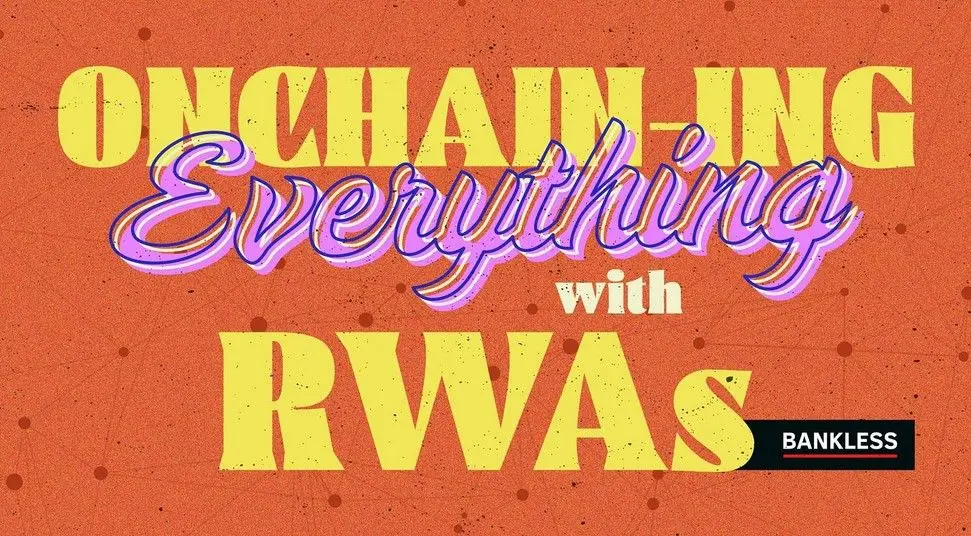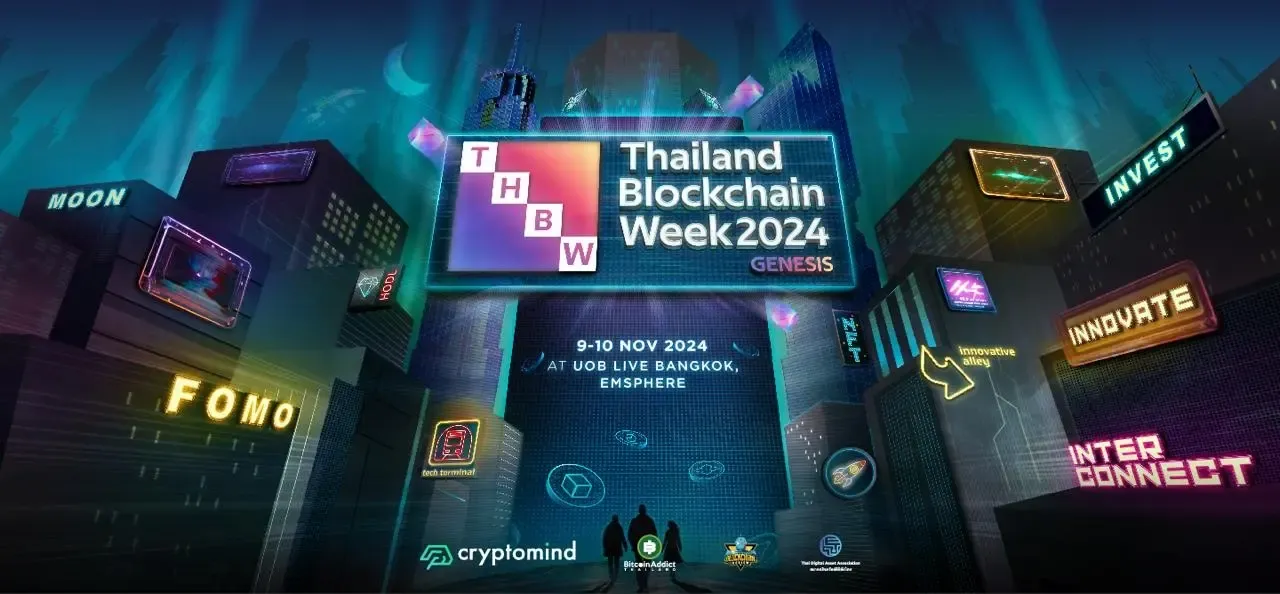Bankless: The 12 Hottest Crypto Investment Narratives of 2024
Original Title: "The 2024 Crypto Investing Narrative Glossary"
Written by: Arjun Chand, Bankless
Compiled by: Lynn, Mars Finance
The bull market is in full swing.
BTC has reached a historic high of over $70,000, ETH has briefly attempted $4,000 again, and the total market capitalization of cryptocurrencies has reached $2.5 trillion. History shows that we are at the beginning of an exciting period.
In a bull market, timing is crucial, and every second counts. "First ape, then research" is the mantra followed by every Degen.
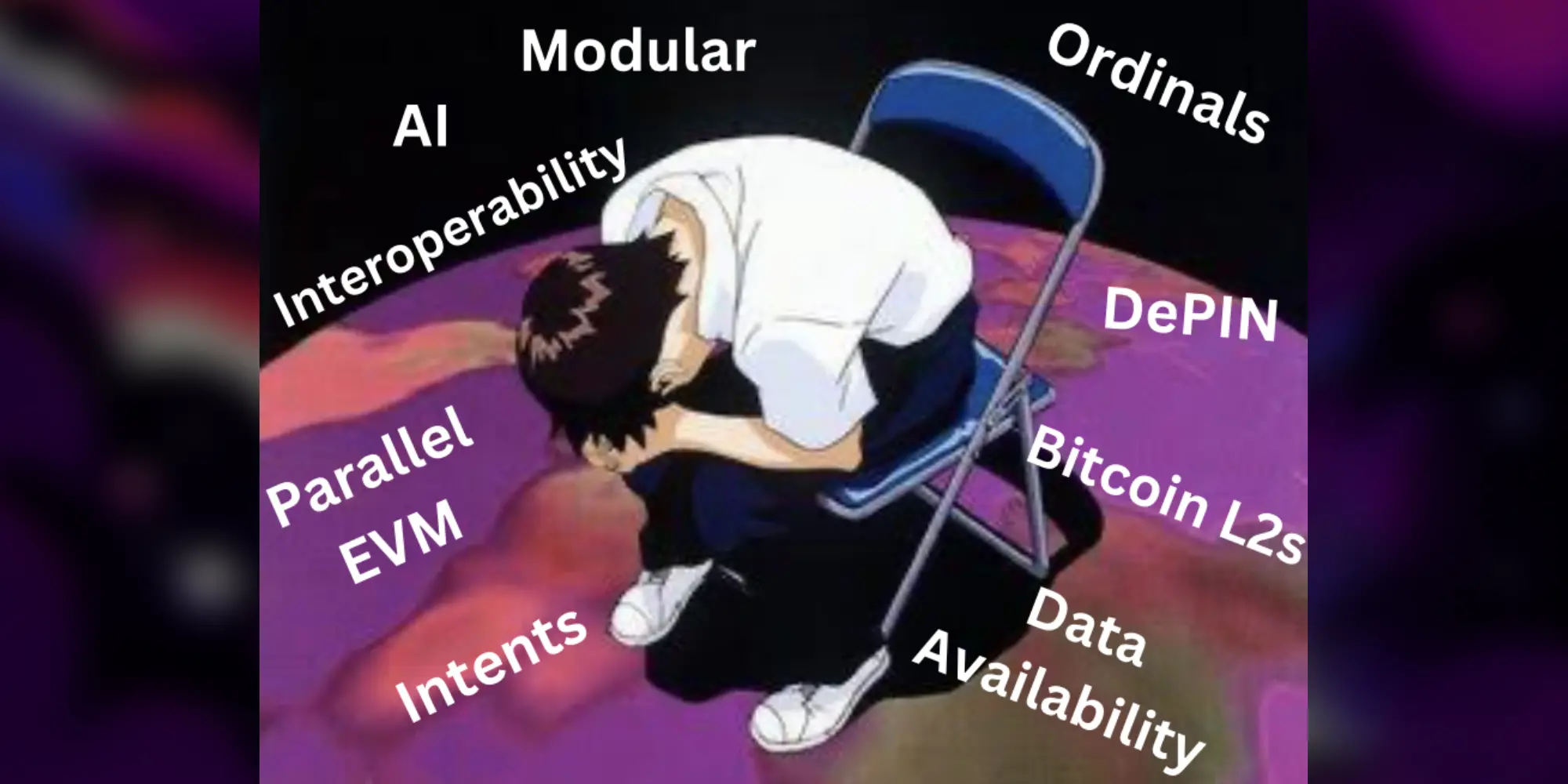
Mood: A distressed crypto degen sits in a chair, looking for the next strong narrative.
During such times, when every piece of news can affect prices, projects often use buzzwords to capture strong narratives.
This Bankless glossary is your cheat sheet to cut through the noise and determine whether a project truly has substance. We hope it becomes a valuable resource for your research and selection of winners in this cycle.
Let's dive in!
What are the hottest crypto investing stories of 2024?
- Decentralized AI
- Re-staking
- Bitcoin L2
- Modular
- Data Availability
- DePIN
- Alt L1
- Intent
- Interoperability
- Inscriptions
- Parallel EVM
- RWA
Decentralized AI
Jumping straight into the current hot topic, decentralized AI involves open-source AI systems running on distributed networks (like blockchains) rather than under the control of a single organization. This approach leverages the advantages of blockchain technology to democratize AI and make it more accessible and usable for everyone.
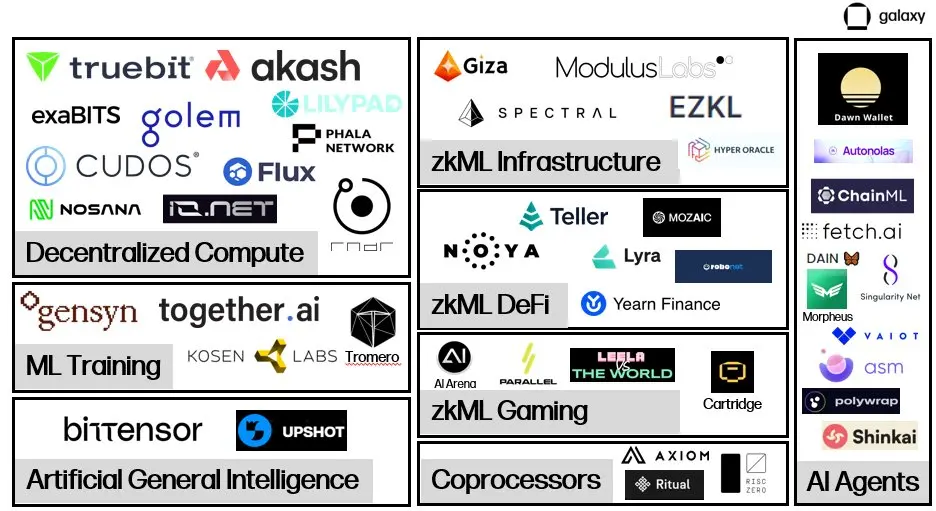
Source: Crypto x AI Landscape Galaxy
Example: Projects like Bittensor, Render, and Grass have created an open market where individuals can train machine learning models, contribute computing resources, and share data. This creates a more inclusive and incentivizing environment for AI innovation.
Narrative: The general consensus is that the intersection of AI and cryptocurrency will be one of the themes of this cycle, as it may be the most easily understood investment opportunity for the masses.
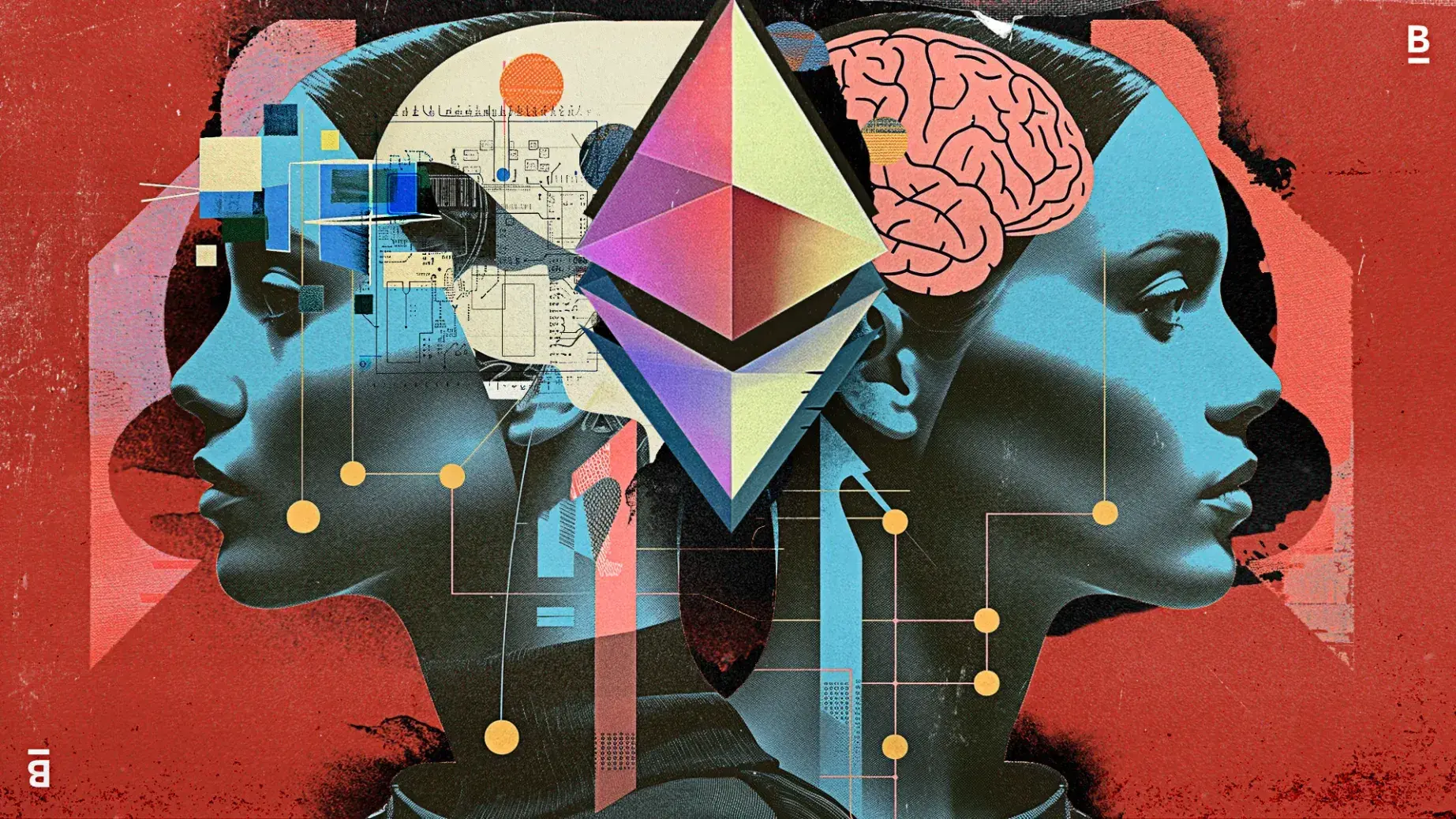

Re-staking
Re-staking is a strategy where investors utilize their staked assets to earn additional rewards, effectively compounding their returns. This is accomplished by participating in further staking opportunities using staked assets on secondary platforms.
Example: EigenLayer is a pioneer of the re-staking movement, allowing users to re-stake ETH that has already been staked with various liquid staking providers. The re-staked ETH on EigenLayer will then be used within its security framework, aimed at extending Ethereum's security guarantees to other applications and blockchains.
Narrative: Re-staking is expected to become one of the biggest events of 2024, with over $11 billion already re-staked on EigenLayer, positioning it as the second-largest application by TVL in the cryptocurrency space. A complete application ecosystem is being designed on EigenLayer, and this growth is expected to continue.

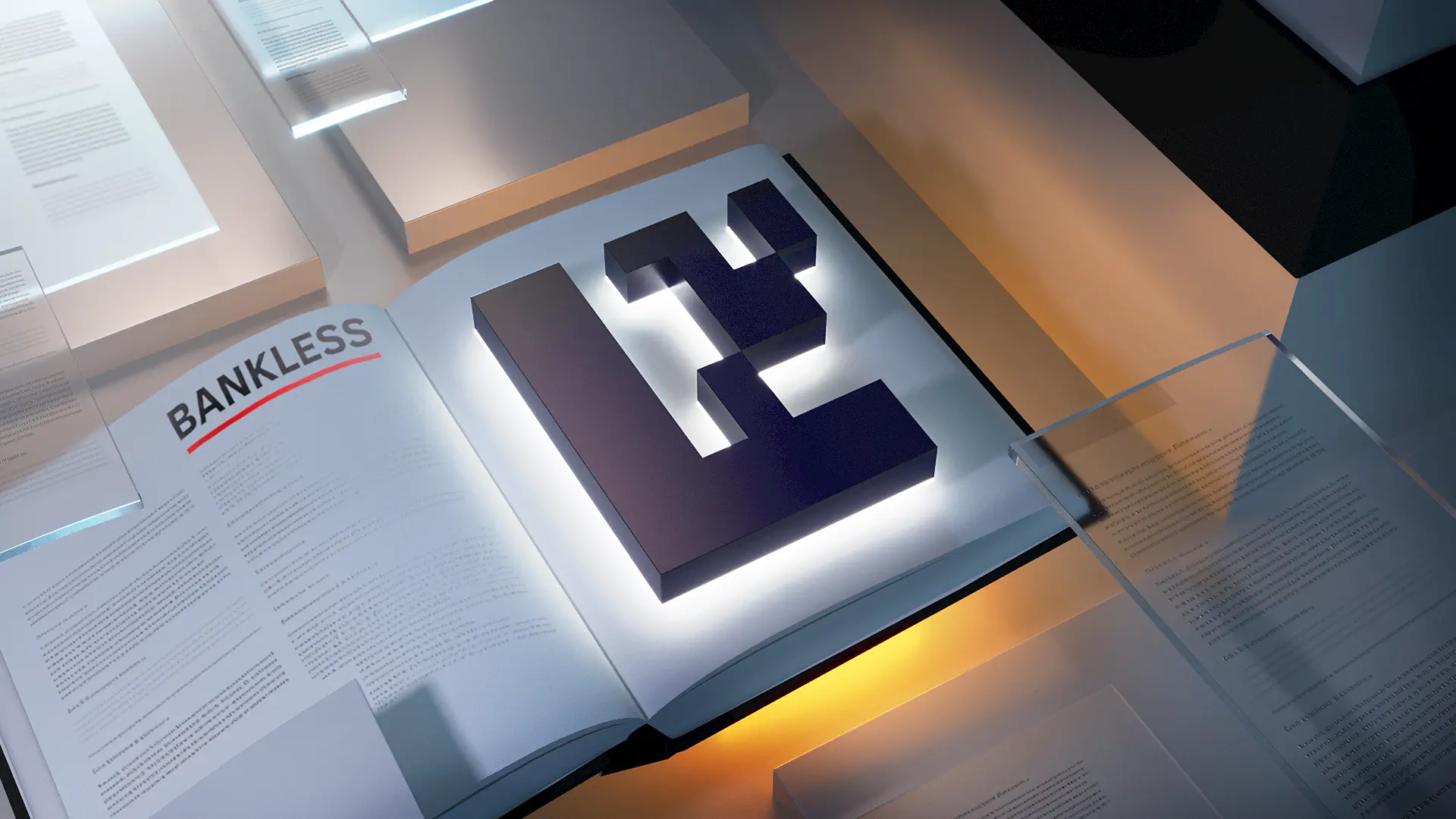
Bitcoin L2
Bitcoin Layer 2 solutions (Bitcoin L2) are networks or protocols built on top of the Bitcoin blockchain (L1). They aim to scale the Bitcoin network by processing transactions off-chain (outside the Bitcoin blockchain) while inheriting its security and benefiting from its network effects.
Example: The Lightning Network, Stacks, and BitVM are popular Bitcoin L2 solutions.
Narrative: Bitcoin L2 has the potential to follow in the footsteps of Ethereum Layer 2's success, unlocking some of the idle capital on Bitcoin. This could drive broader adoption and bring value into the Bitcoin ecosystem.

Modular
Modularity refers to a design approach in cryptocurrency where blockchains and applications are built using separate, dedicated components or modules. This design philosophy aims to improve the efficiency and scalability of the tech stack by isolating the functionalities of each module from others.
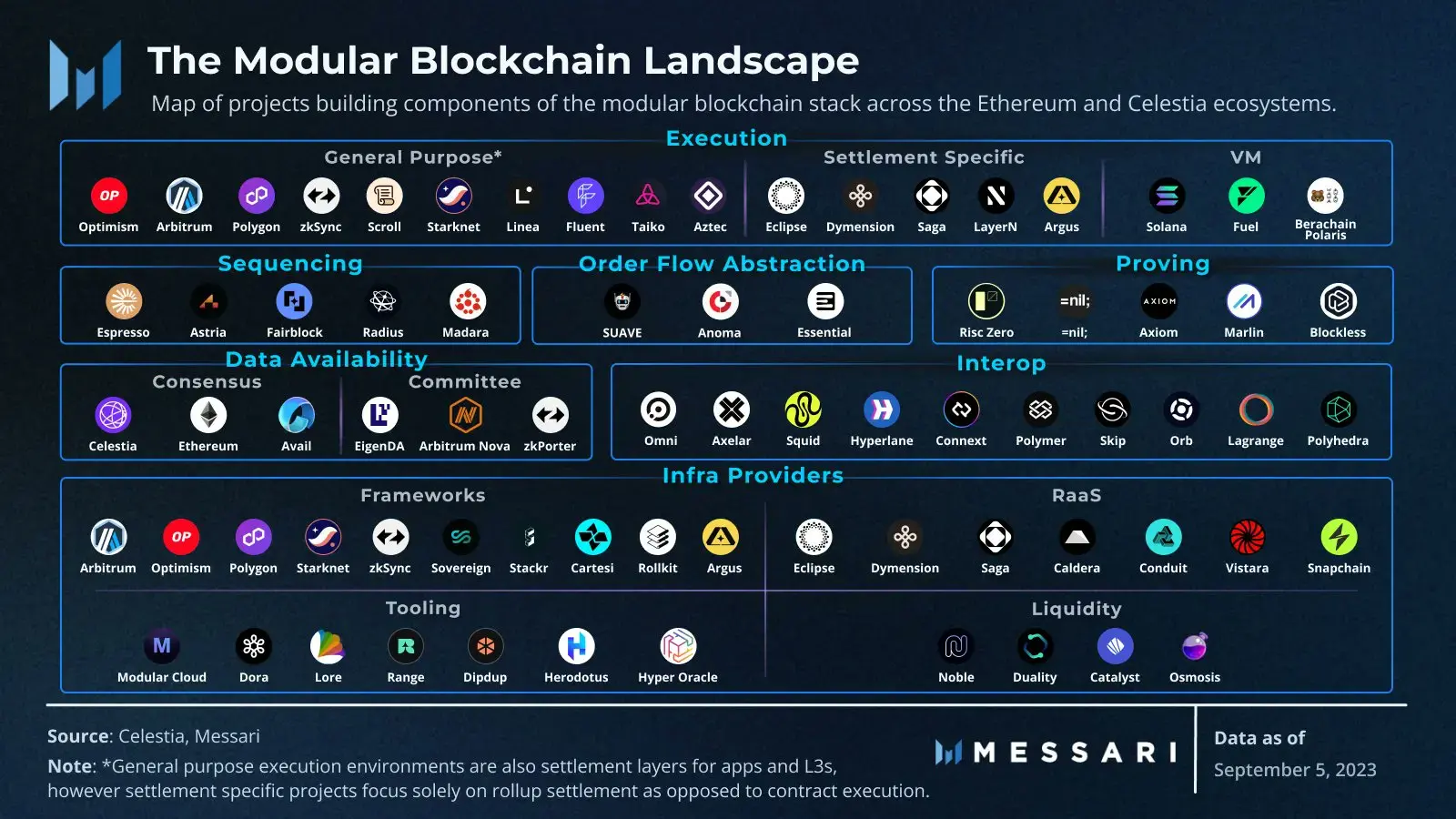
Source: Modular Blockchain Landscape (Messari)
Example: In blockchain development, modularity often involves dividing the architecture into three main layers: execution, settlement, and data availability. The goal is to make blockchains cheaper and more scalable through specialization.
Different projects focus on different parts of the stack. The term is primarily promoted by Celestia, which focuses on the data availability aspect of the stack, while Ethereum is recognized for its strong settlement layer, and Solana is widely praised for its execution capabilities.
Narrative: One of the most prominent narratives around modularity is the concept of "modular money"; Celestia is at the forefront of the modular blockchain movement. This narrative combines several others mentioned in this list, such as the Alt L1 narrative and DA layers.
Data Availability
Data Availability (DA) ensures that all data required to validate transactions on the blockchain is accessible to anyone who needs it.
This is crucial for validating transactions and maintaining the transparency and security of the chain, as anyone can use this data to reconstruct the entire state of the chain when needed.

Source: Modular Blockchain Landscape (Messari)
Example: Traditionally, rollups have relied on Ethereum to meet their data availability requirements. However, with the emergence of more cost-effective options like Celestia, EigenDA, and Avail, we are witnessing a shift as projects begin to adopt these new platforms to meet their data availability needs.
Narrative: DA layers offer a new way to scale blockchains and will become the center for blockchain data publishing.
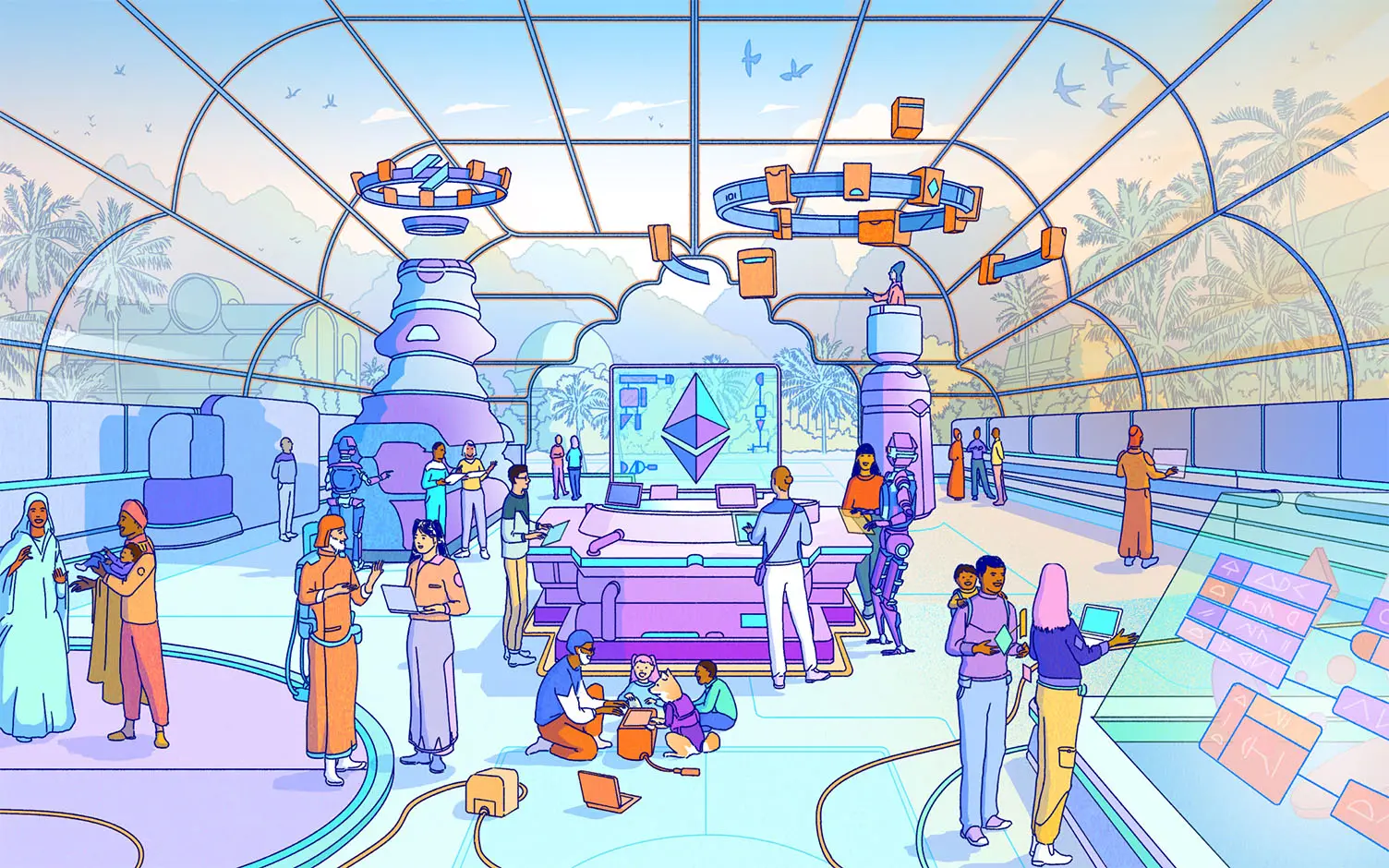
DePIN
Decentralized Physical Infrastructure Networks (DePIN) are systems that manage and coordinate real-world physical infrastructure through decentralized networks built on blockchain technology.
DePIN aims to improve efficiency and reduce infrastructure costs by distributing control and ownership to individuals incentivized to participate in the network.
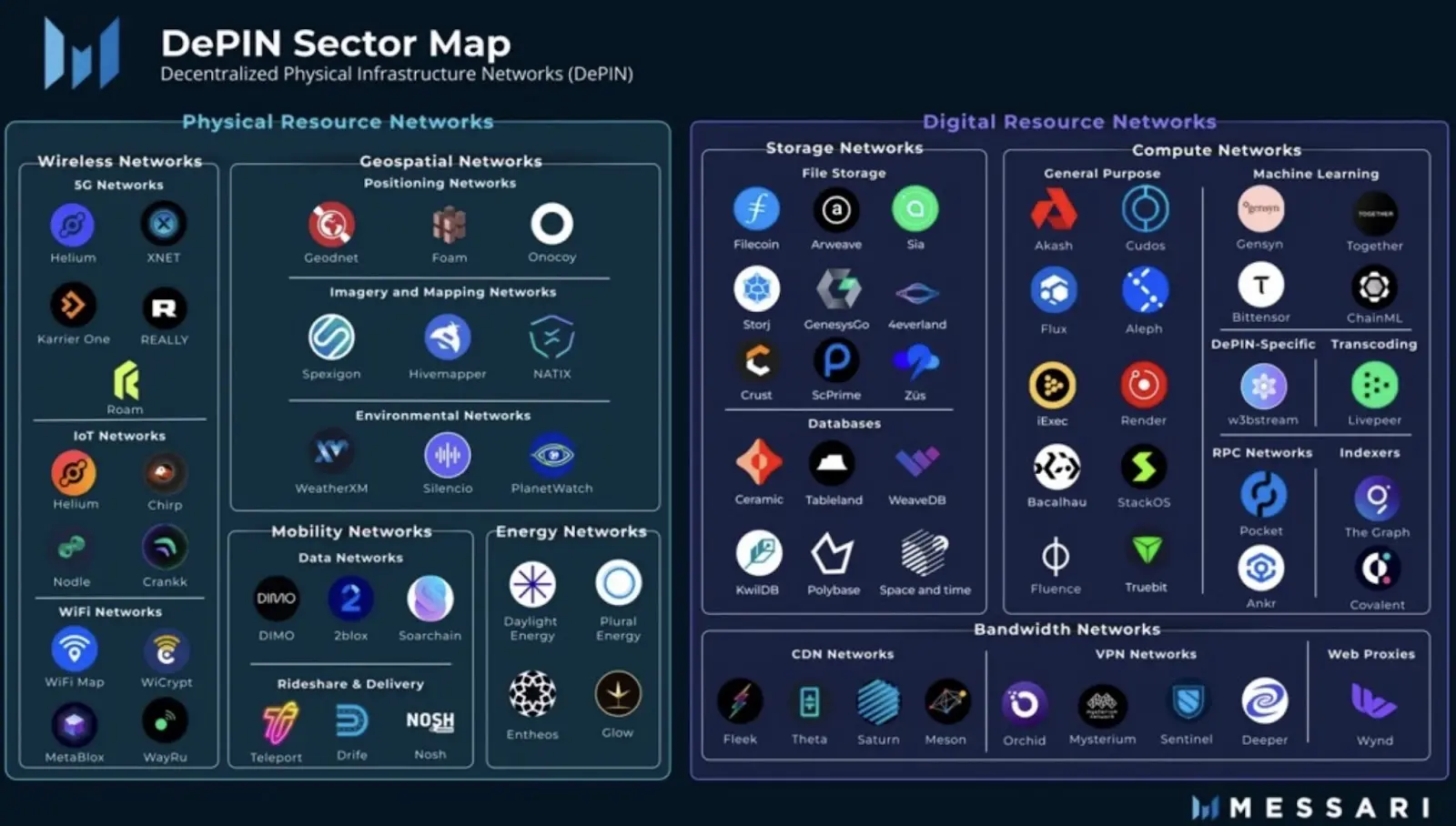
Source: DePIN Sector Map
Example: Helium is recognized as a DePIN initiative, creating a decentralized wireless network that rewards individuals who contribute coverage using Helium network devices. Other notable DePIN projects include Hivemapper, which focuses on global mapping networks, and Filecoin, which provides decentralized file storage solutions.
Narrative: DePIN represents a real-world use case for cryptocurrency and blockchain technology. The synergy with emerging trends, such as the integration of cryptocurrency with AI, further enhances the relevance of DePIN. The rise of AI agents may increase the demand for resources that DePIN projects can provide efficiently and cost-effectively.
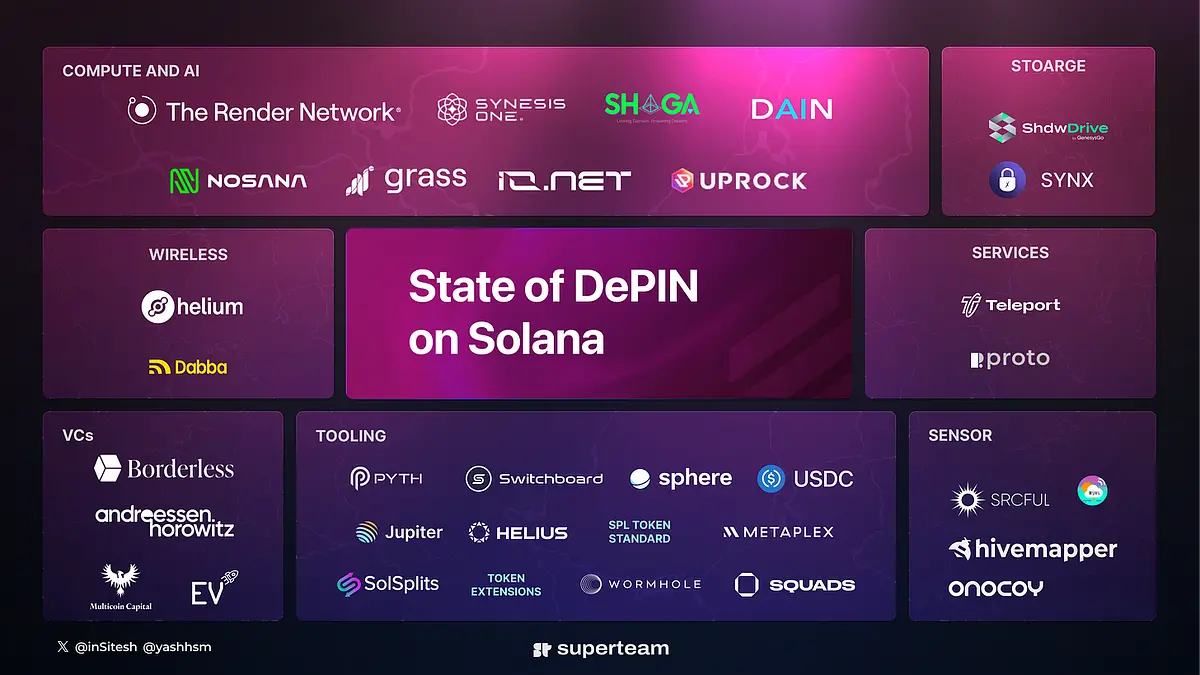
Alt L1
Alternative Layer 1 (Alt L1) is a blockchain that positions itself as a competitor to mainstream blockchains. These blockchains aim to optimize unique features by adopting different technological approaches to address the limitations of existing blockchains.
Example: During the last bull market, Solana and Avalanche emerged as prominent Alt L1s, challenging Ethereum's dominance as the market leader. Solana focuses on high throughput, scalability, and low transaction costs, while Ethereum continues to emphasize security and decentralization.
Narrative: Alt L1 narratives were a defining theme of the last cycle, with Solana, Terra, and Avalanche (often grouped as "SolLunaAvax") at the forefront. The general consensus is that Alt L1 narratives will never disappear and will remain a key theme in every cycle.
In the current bull market, Solana remains the most popular, while newcomers like Celestia are also gaining attention. The shorthand "Solestia" has become a popular term on crypto Twitter, representing the Alt L1 narrative of this cycle.

Intent
In the context of blockchain, intent refers to the outcome or final state that a user wishes to achieve on-chain (e.g., executing a transaction, lending assets). The actual implementation work is delegated to third-party agents rather than the user executing these actions directly. These agents often compete in a quasi-auction environment for the right to fulfill the user's intent in the most efficient manner.
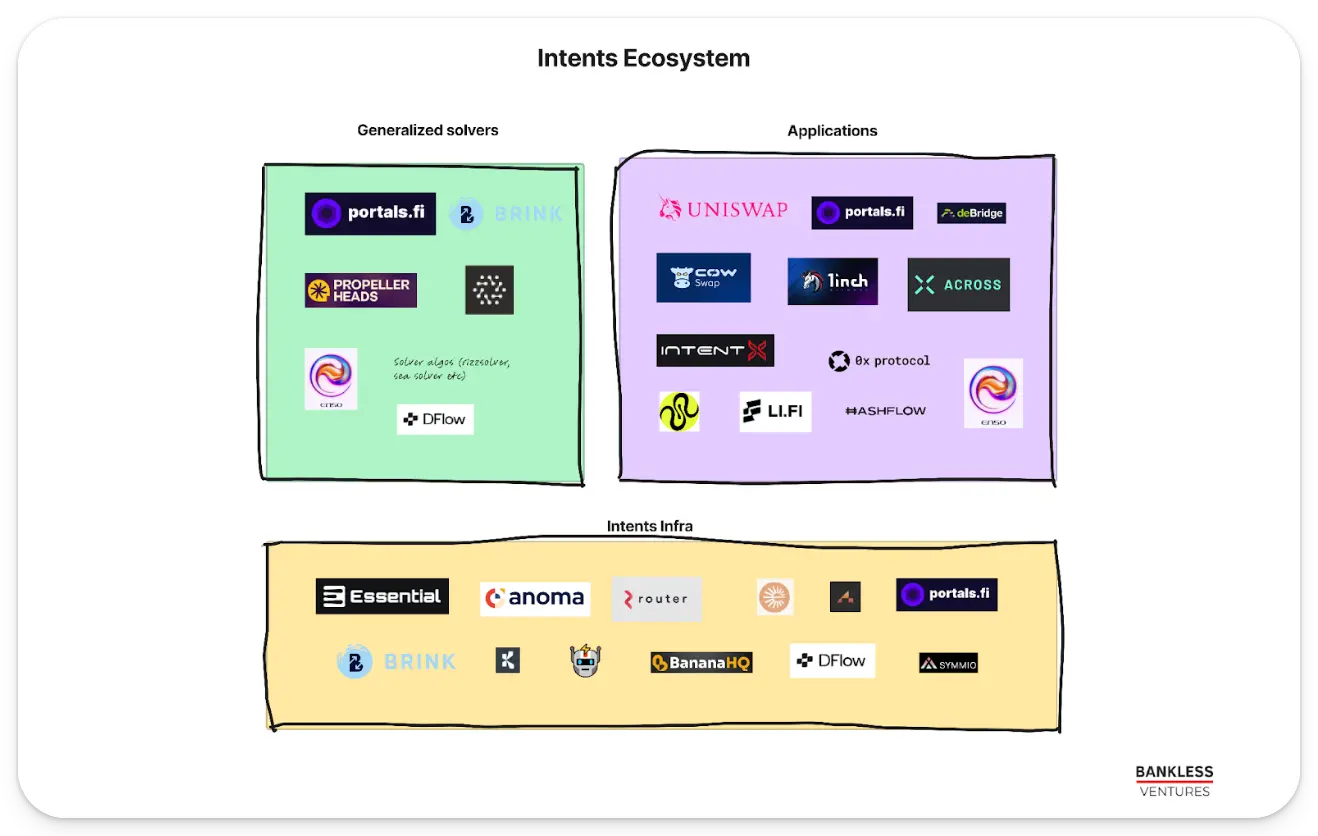
Example: The DeFi ecosystem hosts various intent-driven projects, including foundational protocols like Anoma, Suave, and Essential, as well as applications like Cowswap and Across, and third-party agents like Propellerheads and Barter.
Narrative: Intent-centric protocols are at the forefront of DeFi, generating billions in order flow. They provide significant opportunities to capture value through fees, MEV, and more. These projects also have the potential to greatly enhance the DeFi user experience as an abstraction layer, simplifying interactions in an increasingly complex multi-chain ecosystem.
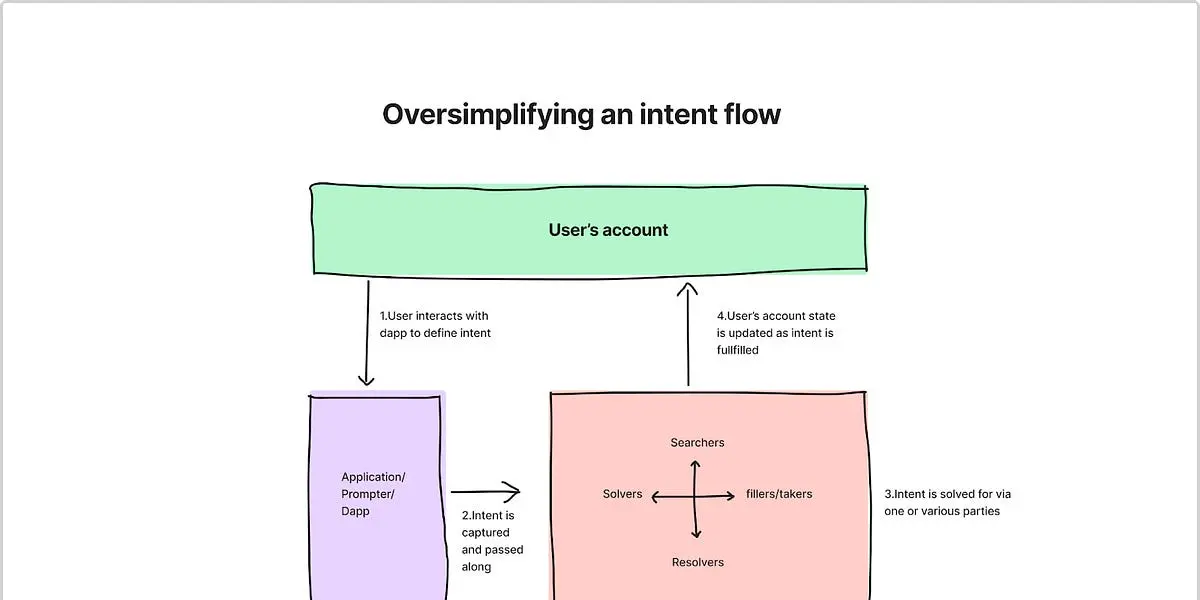
Interoperability
Interoperability refers to the ability of different blockchains to communicate seamlessly and exchange data and assets. This capability unlocks the ability for users to move assets across chains and for applications to operate on multiple chains.
Example: Projects like LayerZero, Axelar, and Wormhole focus on facilitating data transfer between chains. Applications like Across, Stargate, and Connext focus on asset transfers. Additionally, liquidity aggregators like LI.FI also exist. [Disclosure! I work in research at LI.FI]
Narrative: The multi-chain thesis is playing out in real-time. Today, many different blockchains have locked billions of dollars in value within their DeFi ecosystems, serving millions of users. There is a clear need to move data and value across these chains, and this demand will only increase as the number of chains grows. Projects that facilitate the exchange of data and value between chains are valuable tracks in the multi-chain ecosystem.

Inscriptions
Inscriptions are a technique for writing arbitrary data directly onto a single satoshi (the smallest denomination of Bitcoin, where 1 Bitcoin = 100,000,000 satoshis). These inscriptions are commonly referred to by the public as "Bitcoin NFTs," allowing for the creation of unique digital assets on the Bitcoin blockchain. They can also be used to mint BRC-20 tokens based on the experimental BRC-20 standard.

Magic Eden Inscriptions
Example: Bitcoin NFT collections like NodeMonkes, Quantum Cats, and Bitcoin Puppets are notable examples of inscriptions. These can be traded on platforms like OKX's Ordinals Market and Magic Eden. Leading BRC-20 tokens by market capitalization include ORDI, SATS, and MUBI.
Narrative: NFTs have become one of the most popular and valuable assets in cryptocurrency. Bitcoin holders now have the opportunity to expand their investments into new applications based on Bitcoin, such as NFTs and BRC-20 tokens, offering significant potential opportunities.
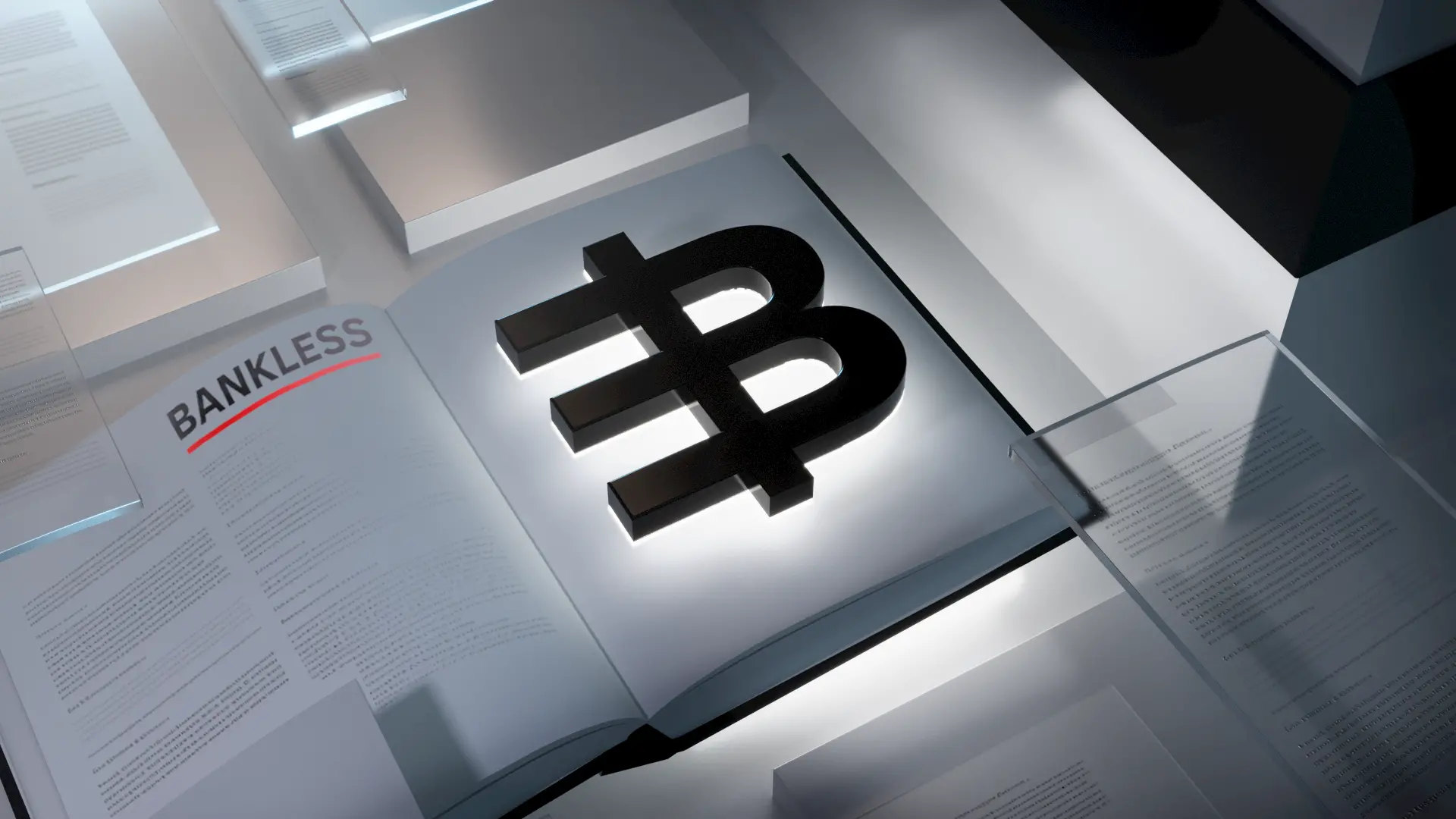
Parallel EVM
Parallel EVM is an innovative blockchain architecture designed to overcome the scalability challenges faced by standard EVMs. It achieves this by executing transactions in parallel (processing multiple independent transactions simultaneously rather than sequentially), thereby increasing throughput and improving user experience.
Imagine a trading platform on Ethereum where each transaction is processed one after another. In contrast, Parallel EVM would allow independent transactions to be executed simultaneously, significantly speeding up transaction processing times.
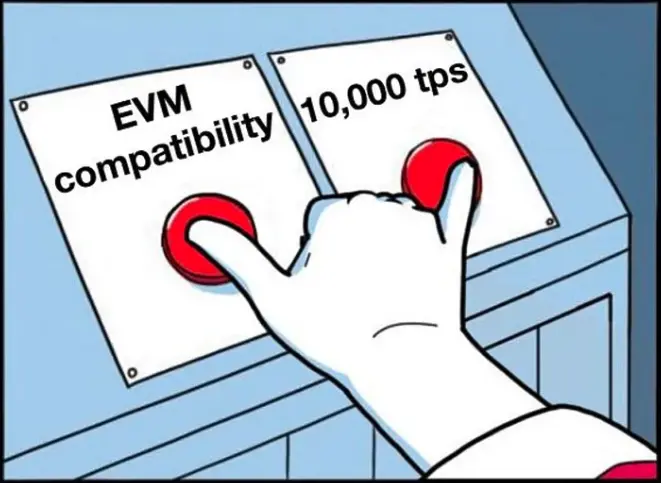
Summary of Parallel EVM narrative.
Example: Projects like Monad and Sei are leading the way in Parallel EVM development. Other notable projects, such as BNB Chain and Scroll, also include Parallel EVM capabilities in their future plans.
Narrative: The Parallel EVM space is particularly promising as it leverages the established network effects and developer ecosystem of EVM while incorporating parallel processing techniques that contribute to Solana's rapid execution speed. By providing a mix of EVM compatibility and high-speed transaction processing, these platforms hold tremendous potential.
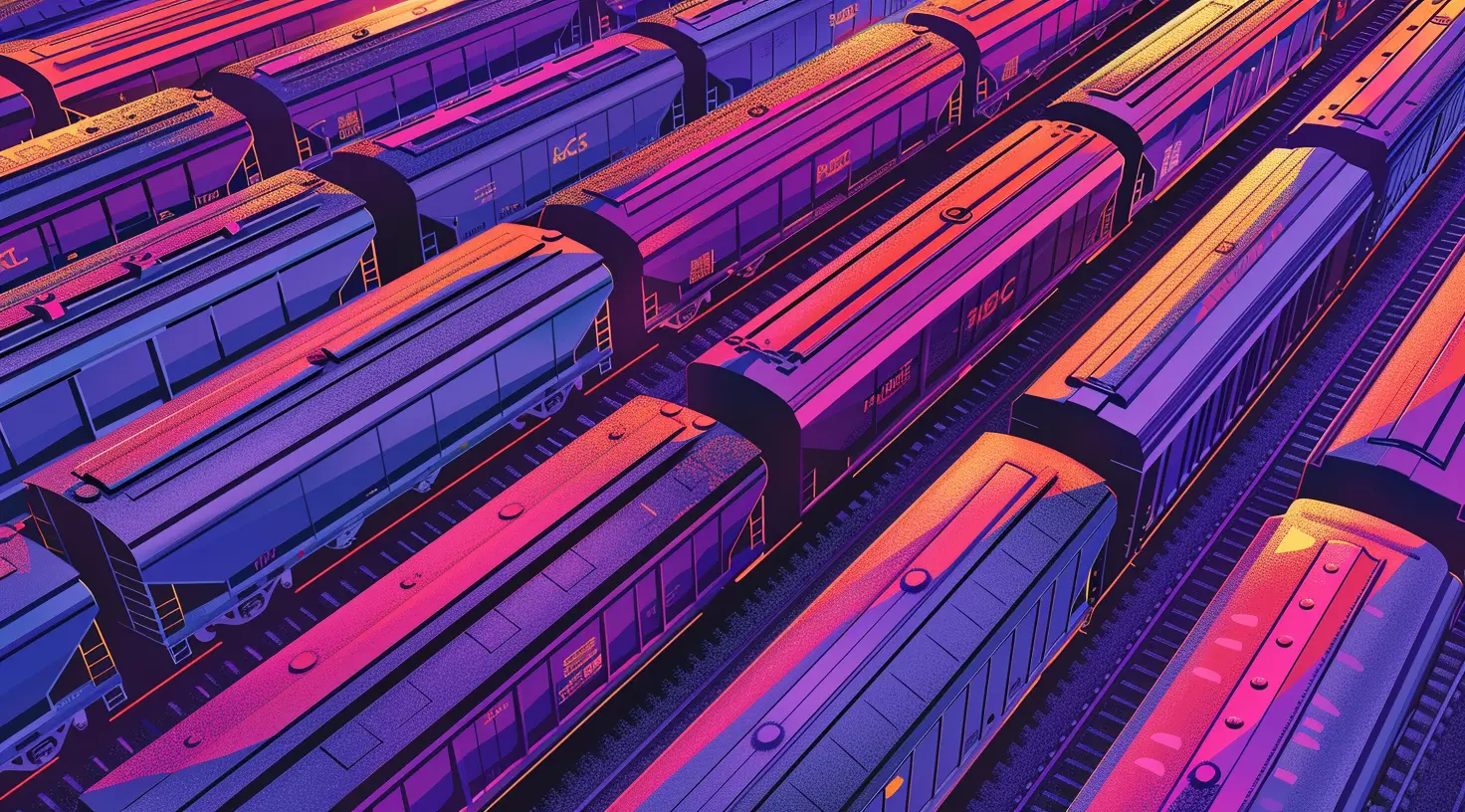

RWA
RWA, or Real World Assets, encompasses a wide range of tangible and intangible assets, such as gold, real estate, commodities, stocks, and fiat currencies like the dollar, whose intrinsic value exists outside the blockchain ecosystem. The tokenization of these assets brings them onto the blockchain, providing innovative ways for their trading, management, and valuation.
Example: The best-known example of real-world asset tokenization is stablecoins like USDC and USDT, which represent dollars on-chain. While stablecoins are a fundamental application of RWA, many projects, such as Ondo, Parcl, and Mattereum, are expanding this concept to various assets, including real estate, treasury bonds, gold, and art.
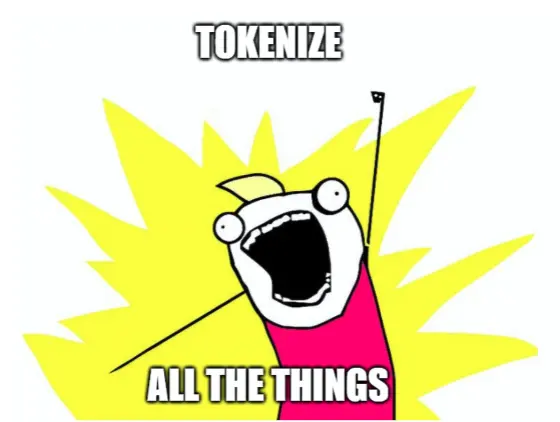
Narrative: RWA protocols have the potential to tokenize nearly all assets in the world and bring them onto the blockchain, tapping into a potential market worth trillions of dollars. As more asset classes are tokenized, the scope of the RWA narrative is expected to expand significantly.
